 Scouts (cruisers):
Scouts (cruisers):Leone, Tigre, Pantera (+Leopardo, Lince cancelled 1920) 1921-1941
WW2 Italian Destroyers
Poerio | Aquila | Mirabello | Leone | Sella | Sauro | Turbine | Navigatori | Freccia | Folgore | Maestrale | Oriani | Soldati | Medaglie d’OroWW2 Italian Torpedo Boats
Indomito | Audace | Audace(ii) | Pilo | Sirtori | La Masa | Generali | Palestro | Curtatone | Albatros | Spica | Pegaso | Ciclone | ArieteThe last “Esploratori” (scouts) were ordered in 1917 but built after WWI due to shortages, and largely inspired by the previous 1916 Mirabello class. They were almost an up-scaling with heavier guns, capable of 33 knots (61 km/h; 38 mph). They were re-rated as destroyers (cacciatorpediniere) in 1938, fought in World War II, and all three lost in Italian East Africa, ordered a one-way ticket mission against the Suez canal. #ww2 #regiamarina #italiannavt #leoneclass #destroyers #suezcanal

Painting or Pantera, src dieselpunks.org
Design of the class
Development History
They were ordered in 1917, as an improved version of the previous Mirabello class, and represented the synthesis of experiences accumulated with the previous Esploratori, as they were postponed until 1918 and then, 1921 due to acute steel shortages. This left four years to dive into reports and correct all and any issues encountered with previous scouts: The Poerio, Mirabello and Aquila, and were actually well balanced, fast ships with excellent firepower.
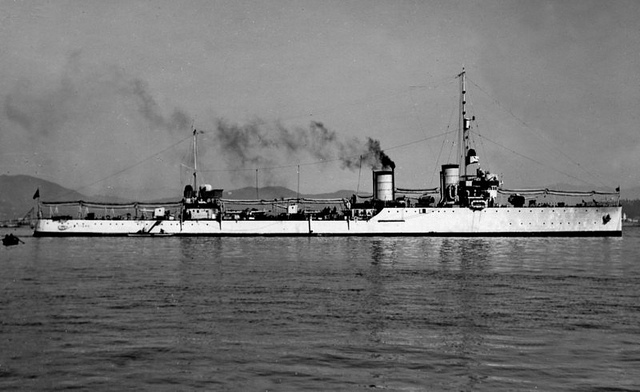
The Leone class (also known informally as the “Belve” class (Eng. “Felines”), due to their names, were conceived as a development of the excellent Mirabello class scouts, and very much an enhanced and enlarged version. The program was ambitious as they were originally, in 1917, supposed to count five ships: Lion (Leone), Tiger (Tigre), Panther (Pantera), Leopard (Leopardo) and Lynx (Lince); Construction was ordered by the Regia Marina at a time where the whole Transalpine industry was put to huge pressure, for a fight mostly done on land. Official order was on 18 January 1917, but the lack of raw materials and especially steel postponed the whole class, due to more urgent priorities, up to 1921. In November 1918, the order was initially canceled, only to be renewed on 30 October 1920. But at this point the lack of funds reduced the program to just three, ship, canceling the construction of Leopardo and Lince and slowing down the construction of Lion, Tiger and Panther over three years.
When completed in 1924 however they represented an obsolete type of ship, as aviation, at least in theory, supplanted fleet scouts in their primary reconnaissance tasks. Some authors of the time called them “flotilla leaders” (condotturi di flottiglia). But they never took this role, only retained as scout cruisers in the RN inventory (perhaps due to Mussolini’s insistence to artificially bolster its cruiser force) until 1938, when they were re-rated as destroyers (cacciatorpediniere), which made more sense. On their alley, the new “Navigatori” class of destroyers had better characteristics and AA defence, while being of the same scale. That’s no wonder the Leone class, despite their names, were sidelined to East Africa in WW2 and considered expandable.
Hull and general design

Longitudinal cutaway, reconstructed from original plans (not found yet, probably private coll.) src ilcornodafrica.it/
Externally the Leone class were reminiscent of the “Mirabello” with a large, roomy hull and minimalistic superstructures, fairly high, elongated forecastle two round funnels of unequal height. They had an overall length of 113.41 meters (372 ft), a beam of 10.36 meters (34 ft) mean draft of 3.1 meters (10 ft 2 in). Displacement, standard, was 2,195 long tons (2,230 t) up to 2,289 long tons (2,330 t) deep load, significantly more than the Mirabello or any scout to date, but still not on par with true cruisers.

Profile, reconstructed from original plans (not found yet, probably private coll.) src ilcornodafrica.it/
Complement was 10 officers and 194 enlisted men and they were recoignised for their good seaworthiness, stability with gentle, predictable roll, and generous living spaces. Crew rooms were lined with wood, had linoleum floors, and even radiator heating, also combating dampness inside. There was also a good ventilation system for the summer, two main galleys, dressing rooms for officers, which had niceely decorated and funished cabins, their own mess, and the ship commander, had a a small private apartment. There were in all two messes for non-commissioned officers and one for officers, bordering to luxurious, which was never seen on an Italian destroyer, or since.
As for safety, the ships carried four service boats, one large tender, one steam cutter, and two yawls under davits fore and aft.
Powerplant
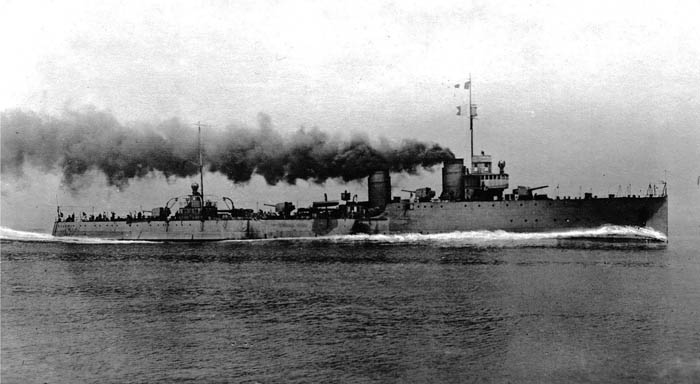
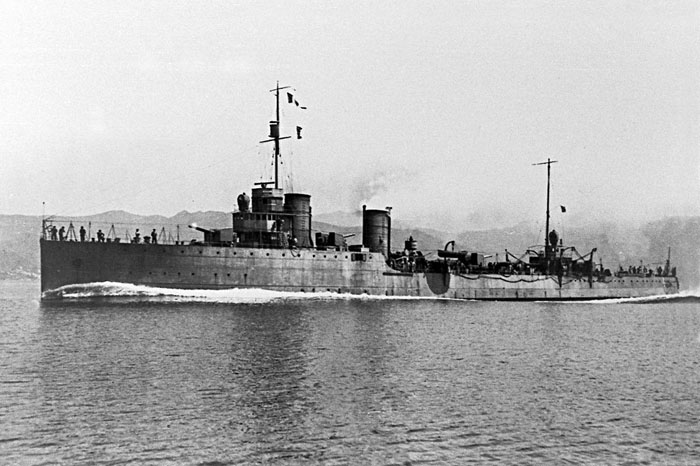
Sea trials of Leone – src Coll. Giorgio Parodi, Conways
The Leones were powered by two Parsons geared steam turbines: Two propeller shafts, with steam supplied by four oil-fired Yarrow boilers that were situated much further forward. The boiler rooms were well separated for ASW protection. Turbines were rated for a total of 42,000 shaft horsepower (31,000 kW) and over 45,000 on trials. This have them adesigned speed of 33 knots (61 km/h; 38 mph) and in sea trials, all exceeded that figure at 33.73 knots for Leone on light displacement (no ammunition, food, storages, water, reduced oil). Note that they came from the same yard, Gio. Ansaldo & C., Sestri Ponente, so they had exact same caracteristics and very close performances. For range, they carried internally 393 long tons (399 t) of fuel oil for 2,000 nautical miles (3,700 km; 2,300 mi) at 15 knots (28 km/h; 17 mph); although other figures are encountered in publications such as 2,070 miles at 18 knots, 1,623 miles at 20 knots and 534 miles at 31 knots.
Preparation time from cold boilers to full steam was four hours, which was considered good and responsive at the time. General performancese were good, but did not innovated muchinnovation compared to the previous Mirabellos. After sixteen years of service they were still able to reach 29 knots.
Armament
The main armament, for the time was the best of any scouts, and at last in par with their “cruiser” status, with no less than eight 120/45 mm cannons of the Cante-Schneider-Armstrong Modello 1918/1919 type, in four shielded twin mounts, arranged along the longitudinal axis: These were one on the forecastle, one between funnels, one between the torpedo banks tubes, one aft, on the stern deck and large fields of fire on broadside or in retreat. What is sure is that they completely outclassed contemporary destroyers.
This was all in conformity with tier scouts tasks, matching enemy destroyers in speed, while being able to beat them in an encounter. The anti-aircraft armament was in 1924 more on par with war lessons, and two 76/40 mm cannons Modello 1916 R.M. were installed either side oif the bridge’s wings for an excellent arc of fire.
The torpedo armament however was lackluster, with six torpedo tubes in two triple banks and only of 450 mm caliber, whereas the new standard was now 533 mm (21 inches) in almost all other navies, albeit later in the interwar this was corrected.
Main
Eight 120mm/45 mm cannons four Modello 1918/1919 mounts, shielded, main axis forecastle, between funnels, amidships between torpedo tubes, astern. Due to their layout, they had large fields of fire for a broadside and at most angles while keeping stability (not superfiring). Perhaps 2500 rounds were carried in all shared between them, all HE and AP types. The 45-calibre Schneider-Canet-Armstrong 1918/19 were a bit of an oddity given their mixed design, but this synthesis was proven beneficial, combining the best features of all brands. Armstrong equivalent was the 4.7 inches QF. They benefited of an elevation increased to 32° for longer range. Shell weight 22-23,15 kg, charge 7,6 kg, muzzle velocity 750-850 m/s, range 15,500 m. They fired at 7 rpm max theoretical, 6 practical.
Anti-Aircraft armament
The inityial anti-aircraft armament consisted of two 76/40 Modello 1916 R.M. anti-aircraft guns. They were placed on the sides of the second smokestack, but landed in 1936 to make room for a welcomed air conditioning system as they were reassigned ito the Red Sea. Also as completed they had two 6.5 mm Colt machine guns positioned freely as needed on pintles. This was of course all upgraded with two 40 mm Vickers-Armstrong QF 2 lb autocannons in 1931 and two 13.2 mm Breda Modello 31 twin guns in 1938 (see upgrades).
Torpedoes
The two 450 mm triple torpedo tube banks were located amidships, on the main axis to launch either side. Recoignised as whefully weak for 1925 already, they were replaced in 1930 by two 533 mm twin launchers, to keep weight down. For that size, this was still weak however.
ASW Armament
For anti-submarine missions, they had at the stern the two usual depht charge racks (five each) plus two towing torpedoes, two type C paravanes for mine protection as well as smoke dispensing systems for concealement.
Upgrades
In 1931-1932, all three saw the removal of their triple 450mm TT banks, replaced by two twin 533 mm at the same location, and installation of two 40mm/39 Vickers-Terni 1917, but theyr kept ther 76 mm dual purpose Ansaldo guns. They would be retired in 1936; not replaced initially.
In 1938, they saw the addition of two twin 13.2mm/76, breda heavy machine gunes and were two 6.5mm/80, Breda light MGs. Displacement rode to 2,150/2,605 tons standard and 2,650 tons fully loaded, whereas the complement grew to 206.
In 1939, they receved two more 6.5mm/80 LMGs and two twin 20mm/65 Breda guns modello 1935. This was their configuiration in 1941. Note that the use of a camouflage was not certain as no photos showed it.
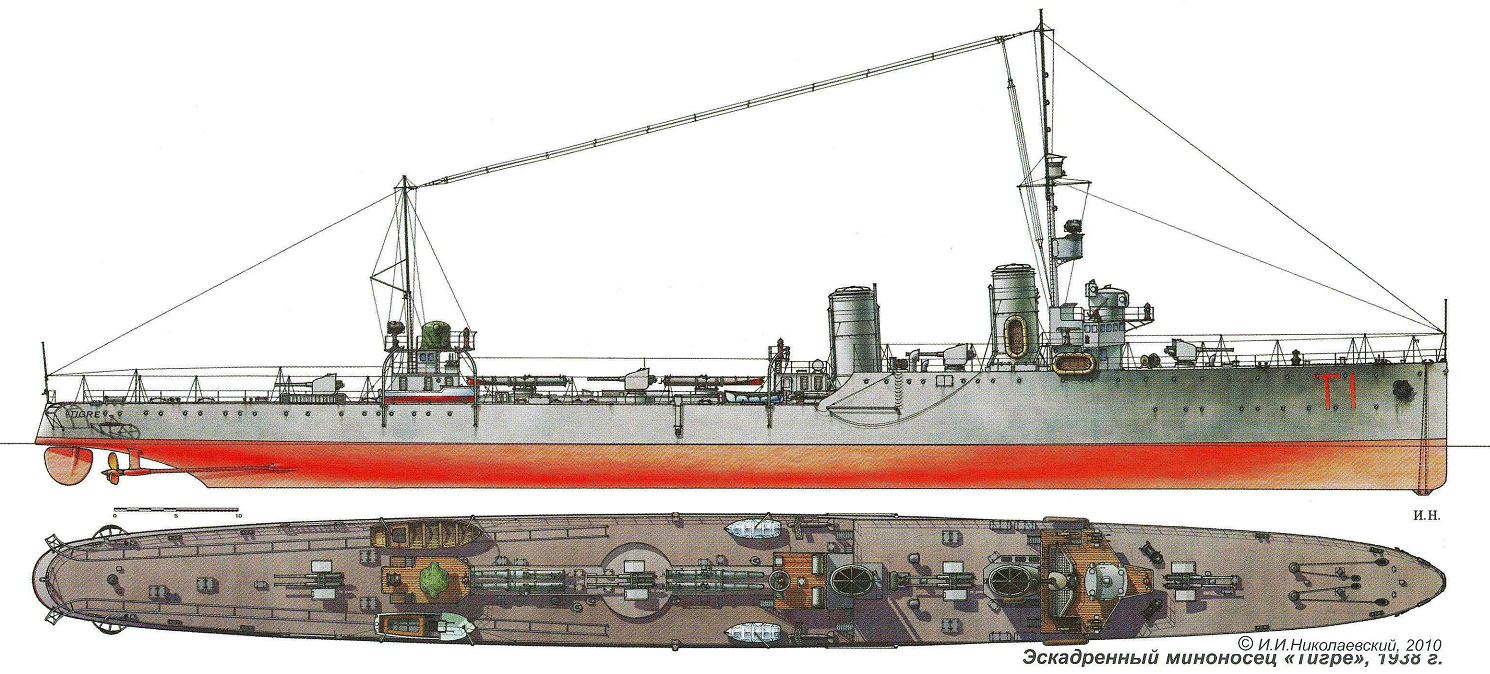
Unknown Russian publication, via pinterest
⚙ specifications 1924 |
|
| Displacement | 1,745t standard, 2,289t FL |
| Dimensions | 109.6 wl/113.4 oa x 10.3 x 3.20/3.60 FL |
| Propulsion | 2 shafts Parsons steam turbines, 4 Yarrow boilers 42,000 hp |
| Speed | 34 kts |
| Range | 400t oil, 2,070 nm/15 kts cruise speed |
| Armament | 4×2 120mm/45 Schneider-Canet-Armstrong M1918-19, 2x 76mm/40 Ansaldo M1917, 2x 6.5mm/80 Breda AA, 2×3 450mm TT, 60 mines |
| Crew | 204 |
General evaluation
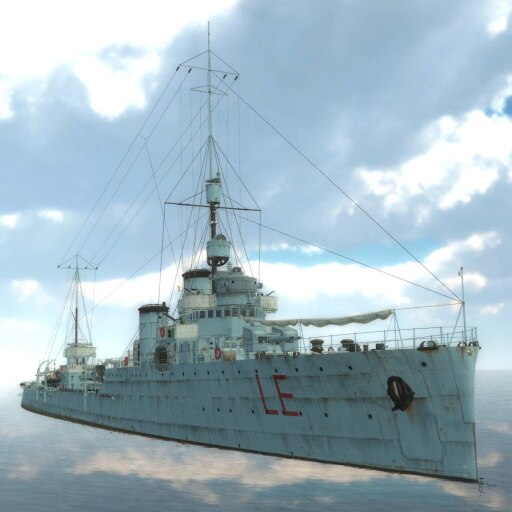
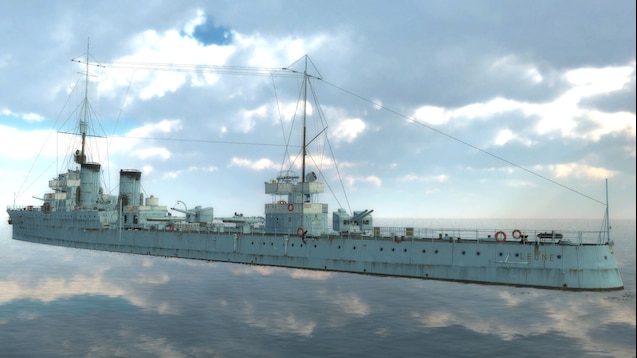

The Leone on Worlds of Warships
Despite their good qualities the role of scout was over when completed they were assigned in 1925 to the newly created ‘Autonomous Group of Light Explorers’ and then affected to to various torpedo divisions within the Naval Squadron, to act as reconnaissance assets. They carried out several representative cruises in Northern Europe and Mediterranean until 1935. Then, they were reassigned to the Naval Division of East Africa based in Massawa, to bring support during the Italian-Ethiopian war.
They remained there until 1940, except for brief returns home for refits, having being reclassed in 1938 as destroyers. They formed the V Destroyer Squadron in 1939. Italian East Africa in 1940 was a quiet post and they only made ten combat missions of little impact over 150 hours. With the fall of Axis forces in East Africa, one was lost and the remaining two were scuttled in early April 1941 in an attempt to sail on Suez.
 Leone
Leone
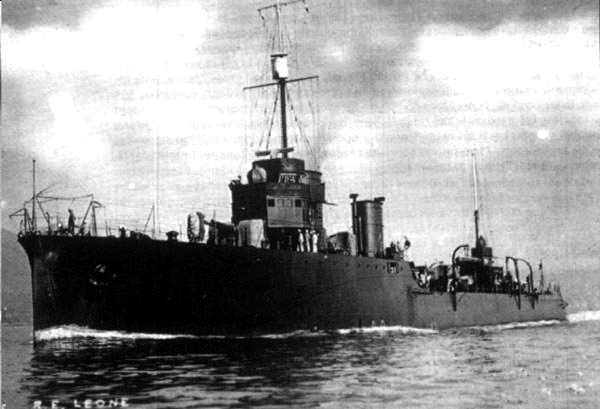
Leone as completed, 1924
In 1925, Leone took part in a cruise in Northern European waters. In 1931 she had a modernization works and then took part in another naval campaign in the Aegean Sea.
In 1936, in anticipation of her transfer to the Red Sea, she receiced air conditioning and cooling systems to avoid overheating ammunition rooms, elimination of a twin mount for the installation of four Breda machine guns. Between 1936 and 1938 she was posted in Italian East Africa but saw little action.
On 27 April 1938, when back in the Mediterranean, she was wrecked by an accidental fire, but saved by the flooding of her ammunition rooms. In 1940 she was partt of the V Destroyer Squadron based in Massawa, together with Tigre and Pantera. Commander was frigate captain Uguccione Scroffa.
On the morning of 27 June 1940 she left Massawa with Pantera and the TB Acerbi to rescue the submarine Perla, surfacing and running aground after an amssibe emanation of methyl chloride which poisoned most of the crew. Howener Leone returned to port due to machinery issues.
In June 1940 she collected the crew of the submarine Archimede, which shared the same poisining issue as Perla. On 19 September she left Massawa with Pantera and Battisti, Manin to attack the allied convoy BN 5 (23 merchant ships escorted by the light cruiser HMNZS Leander and RAN/RNZN sloops Auckland, Yarra and Parramatta, but had to return to port on the 21st, without having found them.
On 21 October 1940, she sailed for another convoy interception and at 2.19 am, with Pantera and the DDs Nullo, Battisti and Manin, attacked the British convoy BN 7 (32 merchantmen, again exorted by HMNZS Leander, and destroyer HMS Kimberley, sloops Yarra, Auckland, Indus). The fight turned unfavorable to the Italians due to the heavy long range fire from Leander, and they fall back, covering their retreat with a smoke screen. Nullo was left isolated after a rudder failure, caught up and sunk by Kimberley.
On 3 December she sailed with Tigre, Sauro and Manin, plus the submarine Ferraris after a convoy, never spotted. On the night of 2-3 February 1941 she unsuccessfully attacked with Tigre and Pantera, another British convoy. As the allies progressed in Italian East Africa and in view of the surrender of Massawa, a plan was organized to sail either to France or Japan, scuttling remaining ships. The 6 destroyers from squadrons III (Battisti, Sauro, Manin) and Squadron V (Tigre, Leone, Pantera) lacked however the autonomy to reach a friendly port and instead, they were to be used in a desperate diversionary action: The attack on Suez led by Tigre, Leone, Pantera while the three other DDs of Squadriglia III would attack Porto Said. If this would have been a success, they were bound back to Massawa and probably being scuttled.

Leone in 1933, src assoc. venus
The V Squadron left on 31 March 1941 and during the night of 31 March-1 April, Leone became stranded on uncharted surbmerged shoals: A large gash opened up, flooding started at the same time a violent fire developed in the bow, impacted, and soon became uncontrollable. The crew had to abandon ship after trying to setup scuttling charged. They were rescued by Pantera, which accelerated the sinking of the sister by gunfire. By April 1, 5AM, Leone sank 13-15 miles north of Awali Hutub (Dahlak archipelago). In total furing the war she carried out 10 missions, covering a total of 2,388 miles.
 Tigre
Tigre
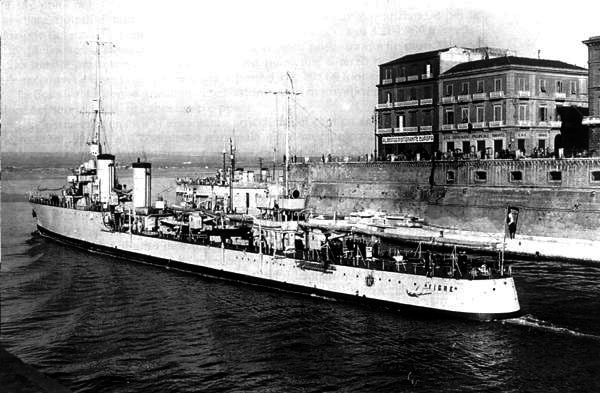
Tigre interwar, src USMM
In 1925, Tigre took part like her sister in a Northern European cruise and in 1930 Aegean Sea exercizes.
In 1931 she was moderniz and by 1936, was tropicalized before being deployed to the Red Sea, and in 1938 until 1940 she was in the V Destroyer Squadron, Massawa, with her sisters, under command of frigate captain Gaetano Tortora.
From the the order of the day became the interception of British convoys going through the Red Sea. First was a night raid between 28 and 29 August 1940 when she sailed with Pantera, without results. On 3 December she sailed with Leone, Sauro and Manin, submarine Ferraris for the same. The night between 2-3 February 1941 she spotted and attacked a convoy with Leone and Pantera, but was rebuffed. With the imminent fall of Italian East Africa and future possible surrender of Massawa, Squ. V (Tigre, Leone, Pantera) were sent to an attack on Suez.

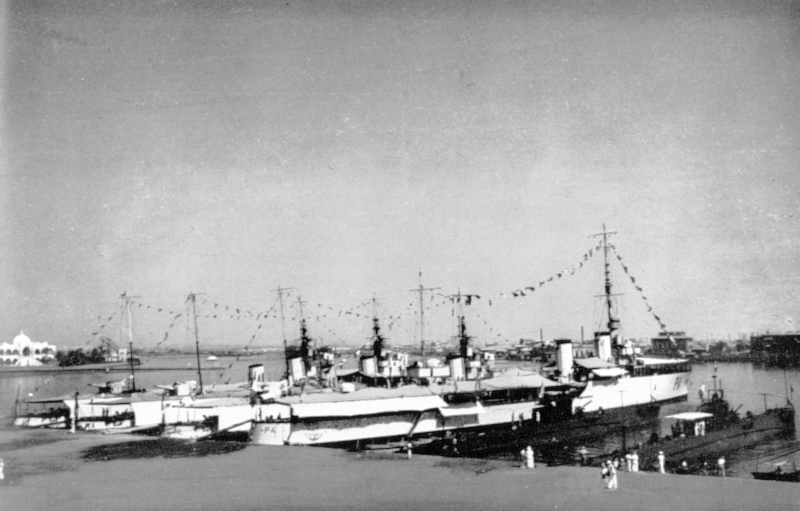
The three sisters at Massawa, East Africa in 1941, credits USMM X
The V Squadron left on 31 March, aborted when Leone ran aground, was scuttled and changed as the planned diversionary action by the Luftwaffe against Suez failed. They would be redirected to the III squadron and attack together Port Said. April 2, 1941, 2:00PM all five destroyers left until spotted by reconnaissance planes at dawn on 3 April, just 30 miles from Port Said, after steaming over 270 miles. The RAF scrambled some 70 Bristol Blenheim bombers, Fairey Swordfish, arriving on them in waves. The formation was broken, and the destroyers zig-zagged while firing their AA until all were eventually were hit and badly damaged. In the battle of Port Said, Sauro and Manin survived at first and closed on Port Said until both were sunk but Tigre and Pantera retreated, and to escape incoming destroyers they headed eastwards to reach the Arabian coast, trying to reach the coast, and free their crews after being scuttled.
In the 3-4 April night, Tigre and Pantera arrived off the coast of Someina (15 miles south of Jeddah), Yemen, and were abandoned by their crews while scuttling charges were prepared. At dawn, air attacks resumed and HMS Kingston arrived on site, and started to shell the now deserted ships. Both crews were interned in Jeddah, Saudi Arabia as per allied agreements with the King. Tigre made 10 missions, over 2,706 miles. Her wreck was gradually scrapped and recycled in the following years but some remains survived for divers to explore.
 Pantera
Pantera
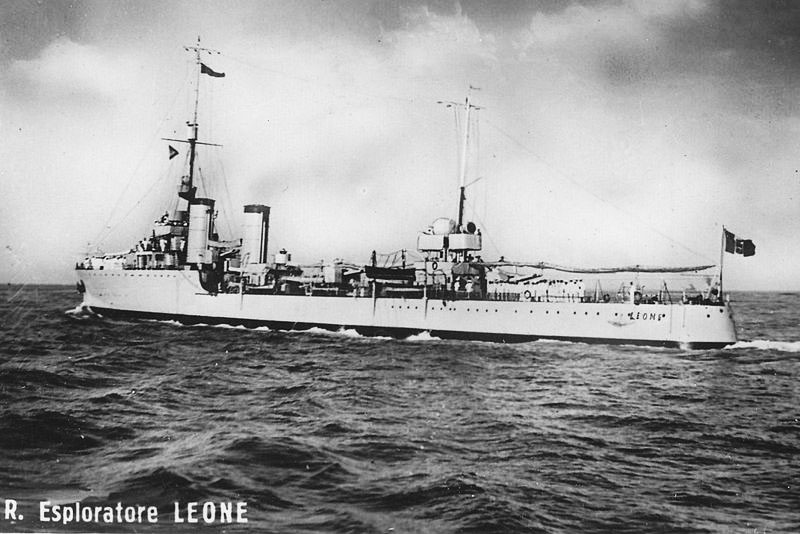
No CC photo of Pantera, here is Leone
In 1925 Pantera cruised in Northern Europe, Aegean sea in 1927, Spain in 1928 and took part in exercises in the western Mediterranean basin and both Italian coasts. She was modernized in 1931 and in 1935 under command of frigate captain Giovanni Marabotto, she was sent to Italian East Africa, in support of the Ethiopian conquest. In 1936, she was tropicalized and prepared to be based permanenlty in East Africa while a distinguished captain took command: Aimone of Savoy-Aosta, part of the Royal Family.
Like her sister, Pantera was in the V Destroyer Squadron in Massawa, now in 1940 under command of captain Paolo Aloisi, her last captain.
On 27 June 1940 she left Massawa with Leone and Acerbi to recue the submarine Perla but soon reversed course when informed of the presence of the light cruiser HMZNS Leander and destroyers Kandahar, Kingston underway to attack Perla. The night of 28-29 August 1940 she sailed with Tigre after a convoy, missed it. On 19 September she left Massawa with Leone and Battisti, Manin to intercept convoy BN 5 but missed it and were back on the 21st.
On 21 October 1940, at 2.19 am, she as underway with Leone, Nullo, Battisti and Manin, to intercept BN 7 but the fight turned against the Italians which turned back under a smoke screen, Nullo being caught up and sunk.
On 2-3 February 1941 she sortied with Leone and Tigre to attacj another British convoy with the same results. As her sisters, the incoming loss of East Africa and planned fall of Massawa, meant Sqn. V was to be sent to Suez, leaving on 31 March, loosing Leone (which ran aground and was later scuttled) Pantera recuing its crew. Later while back at Massaw the local command was informed of the failure of the planned diversionary action by the Luftwaffe against Suez adn they were redirected to Port Said.
On 2 April 1941, she left Massawa under command of captain Andrea Gasparini, with aboard too the former Leone’s commander (frigate captain Uguccione Scroffa) while Captain Aloisi was left behing to organize the Italian guerrilla war in East Africa.
Battisti scuttled itself after her worn out engine broke down, and the remainder of the tow squadrons sailed until spotted by reconnaissance seaplanes. At dawn on 3 April, the battle of Port Said commenced at dawn (70 Blenheim and Swordfish in waves).
Tigre and Pantera retreated, sailed eastwards to the Saudi Arabian coast, and on the night of 3-4 April, closed to the coast of Someina, Yemen, were abandoned and prepared to be scuttled. Ai attacks resumed at dawn, and HMS Kingston arrived on site to finish them off, torpedoing Pantera. Still her masts remained emerging for a long time before she was scrapped. Her crew was interned in Jeddah until September 1943.
Read More/Src
Books
Brescia, Maurizio (2012). Mussolini’s Navy: A Reference Guide to the Regina Marina 1930–45. Annapolis NIP
Campbell, John (1985). Naval Weapons of World War Two. Annapolis NIP
Fraccaroli, Aldo (1968). Italian Warships of World War II. Shepperton, UK: Ian Allan.
Gray, Randal, ed. (1985). Conway’s All the World’s Fighting Ships 1906–1921. Annapolis NIP
O’Hara, Vincent P. (2009). Struggle for the Middle Sea: The Great Navies at War in the Mediterranean Theater, 1940–1945. Annapolis NIP
Roberts, John (1980). “Italy”. In Chesneau, Roger (ed.). Conway’s All the World’s Fighting Ships 1922–1946. Mayflower Books..
Rohwer, Jürgen (2005). Chronology of the War at Sea 1939–1945: The Naval History of World War Two. Annapolis NIP
Whitley, M. J. (1988). Destroyers of World War 2: An International Encyclopedia. Annapolis NIP
Cernuschi, Enrico (2022). “Esploratori of the Regia Marina, 1906—1939”. In Jordan, John (ed.). Osprey Publishing
Franco Bargoni. Esploratori Italiani. Roma, Ufficio Storico della Marina Militare ,1996
Pier Filippo Lupinacci e Aldo Cocchia. La Marina Italiana nella Seconda Guerra Mondiale. Vol. X 1961

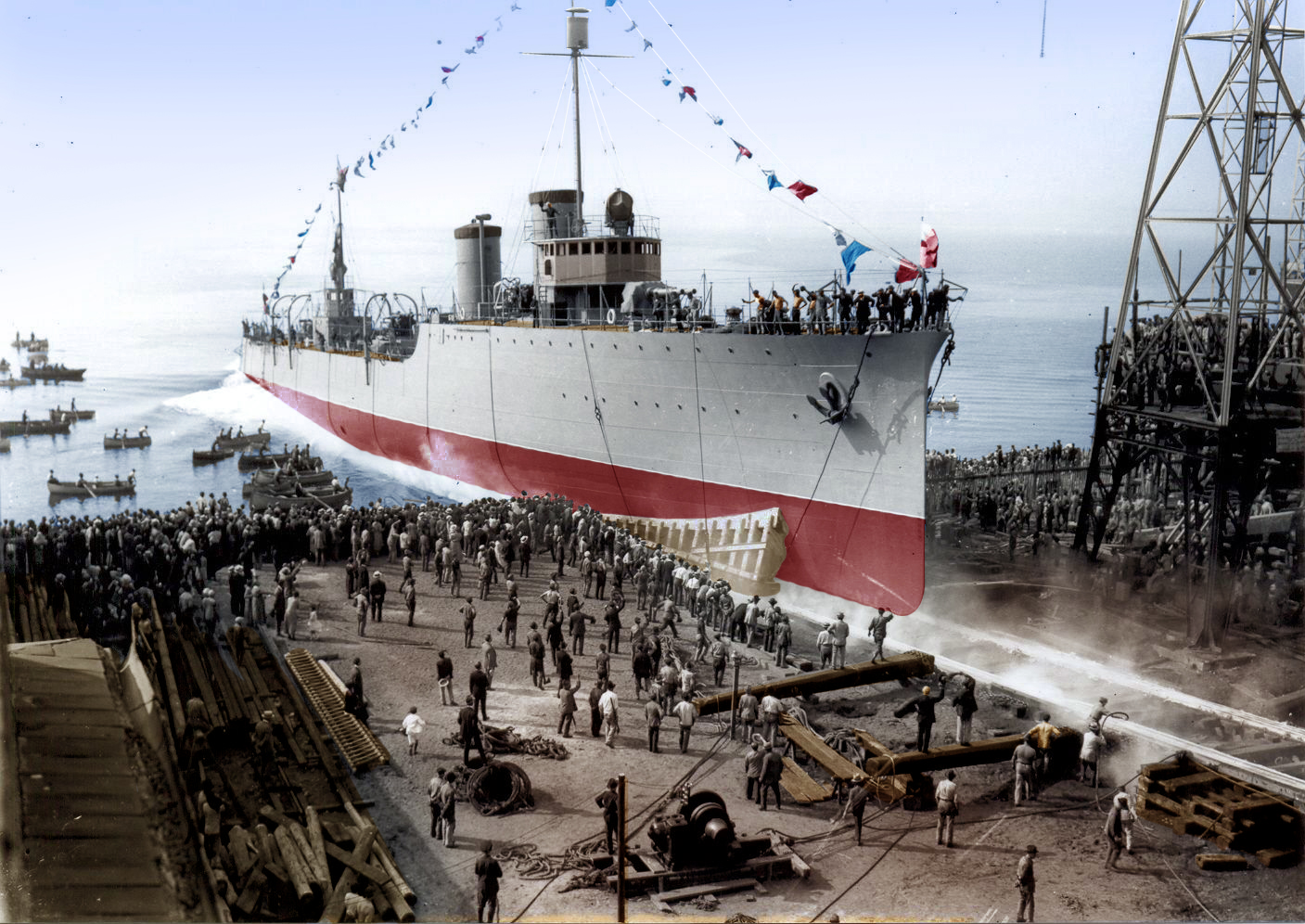
Launch of Leone, archivio Storico Ansaldo, M. Brescia, assoc. venus, original and colorized by the author
Links
conlapelleappesaaunchiodo.blogspot.com
comandosupremo.com evolution-of-italian-destroyers
on navypedia.org/
alchetron.com/ Leone-class
cherini.eu Leone Pancaldo
associazione-venus.it
marina.difesa.it/ leone
web.archive.org/ Leone.html
trentoincina.it/
dieselpunks.blogspot.com
regiamarinaitaliana.it
it.wikipedia.org/
Videos
Model Kits
Nothing found yet


 Latest Facebook Entry -
Latest Facebook Entry -  X(Tweeter) Naval Encyclopedia's deck archive
X(Tweeter) Naval Encyclopedia's deck archive Instagram (@navalencyc)
Instagram (@navalencyc)





 French Navy
French Navy Royal Navy
Royal Navy Russian Navy
Russian Navy Armada Espanola
Armada Espanola Austrian Navy
Austrian Navy K.u.K. Kriegsmarine
K.u.K. Kriegsmarine Dansk Marine
Dansk Marine Nautiko Hellenon
Nautiko Hellenon Koninklije Marine 1870
Koninklije Marine 1870 Marinha do Brasil
Marinha do Brasil Osmanlı Donanması
Osmanlı Donanması Marina Do Peru
Marina Do Peru Marinha do Portugal
Marinha do Portugal Regia Marina 1870
Regia Marina 1870 Nihhon Kaigun 1870
Nihhon Kaigun 1870 Preußische Marine 1870
Preußische Marine 1870 Russkiy Flot 1870
Russkiy Flot 1870 Svenska marinen
Svenska marinen Søværnet
Søværnet Union Navy
Union Navy Confederate Navy
Confederate Navy Armada de Argentina
Armada de Argentina Imperial Chinese Navy
Imperial Chinese Navy Marinha do Portugal
Marinha do Portugal Mexico
Mexico Kaiserliche Marine
Kaiserliche Marine 1898 US Navy
1898 US Navy Sovietskiy Flot
Sovietskiy Flot Royal Canadian Navy
Royal Canadian Navy Royal Australian Navy
Royal Australian Navy RNZN Fleet
RNZN Fleet Chinese Navy 1937
Chinese Navy 1937 Kriegsmarine
Kriegsmarine Chilean Navy
Chilean Navy Danish Navy
Danish Navy Finnish Navy
Finnish Navy Hellenic Navy
Hellenic Navy Polish Navy
Polish Navy Romanian Navy
Romanian Navy Turkish Navy
Turkish Navy Royal Yugoslav Navy
Royal Yugoslav Navy Royal Thai Navy
Royal Thai Navy Minor Navies
Minor Navies Albania
Albania Austria
Austria Belgium
Belgium Columbia
Columbia Costa Rica
Costa Rica Cuba
Cuba Czechoslovakia
Czechoslovakia Dominican Republic
Dominican Republic Haiti
Haiti Hungary
Hungary Honduras
Honduras Estonia
Estonia Iceland
Iceland Eire
Eire Equador
Equador Iran
Iran Iraq
Iraq Latvia
Latvia Liberia
Liberia Lithuania
Lithuania Mandchukuo
Mandchukuo Morocco
Morocco Nicaragua
Nicaragua Persia
Persia San Salvador
San Salvador Sarawak
Sarawak Uruguay
Uruguay Venezuela
Venezuela Zanzibar
Zanzibar Warsaw Pact Navies
Warsaw Pact Navies Bulgaria
Bulgaria Hungary
Hungary

 Bundesmarine
Bundesmarine Dutch Navy
Dutch Navy Hellenic Navy
Hellenic Navy Marina Militare
Marina Militare Yugoslav Navy
Yugoslav Navy Chinese Navy
Chinese Navy Indian Navy
Indian Navy Indonesian Navy
Indonesian Navy JMSDF
JMSDF North Korean Navy
North Korean Navy Pakistani Navy
Pakistani Navy Philippines Navy
Philippines Navy ROKN
ROKN Rep. of Singapore Navy
Rep. of Singapore Navy Taiwanese Navy
Taiwanese Navy IDF Navy
IDF Navy Saudi Navy
Saudi Navy Royal New Zealand Navy
Royal New Zealand Navy Egyptian Navy
Egyptian Navy South African Navy
South African Navy






























 Ukrainian Navy
Ukrainian Navy dbodesign
dbodesign